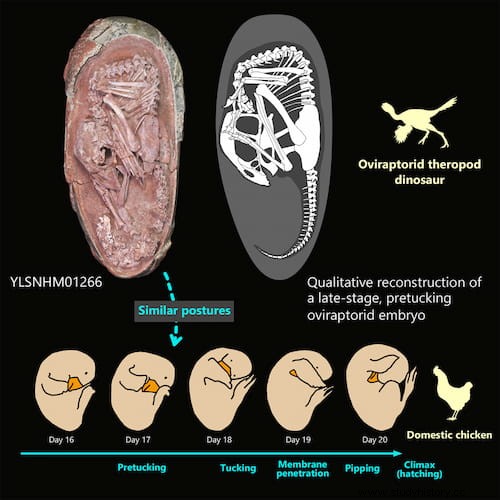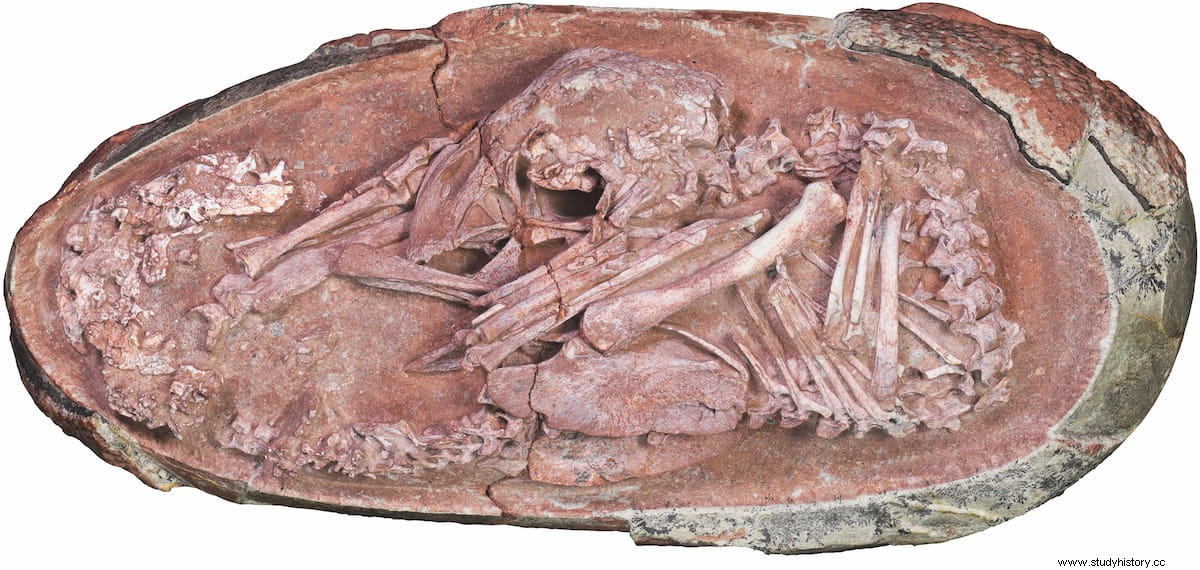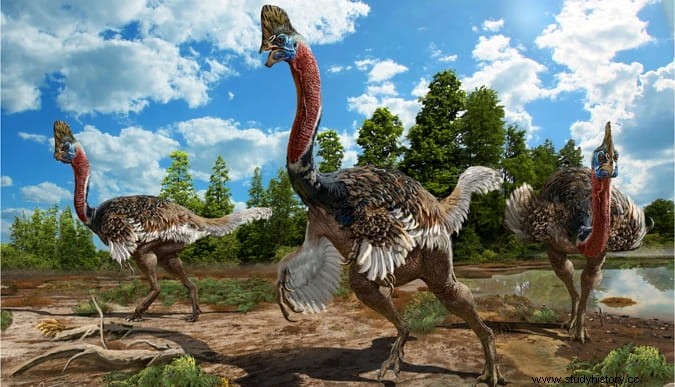An embryo between 72 and 66 million years ago found inside a fossilized dinosaur egg sheds new light on the relationship between modern birds and dinosaurs, according to a new study.
The embryo, nicknamed Baby Yingliang , was discovered in the Late Cretaceous rocks of Ganzhou, southern China, and belongs to a toothless theropod dinosaur, or oviraptorosaur. The fossil, one of the most complete dinosaur embryos ever found, suggests that these dinosaurs developed bird-like postures near hatching.
Scientists discovered that the posture of the Baby Yingliang it is unique among known dinosaur embryos:its head lies below the body, with its feet on either side, and its back curled along the blunt end of the egg. This posture, hitherto unknown in dinosaurs, is similar to that of modern bird embryos.

In modern birds, these postures are related to folding , a behavior controlled by the central nervous system and critical for hatching success. After studying the egg and embryo, the researchers believe that this prehatching behavior, previously thought to be unique to birds, may have originated among non-avian theropods.
Led by scientists from the University of Birmingham and the China University of Geosciences (Beijing), the team published their findings in iScience .
The embryo is in its vital position without great alterations due to fossilization. With an estimated length of 27 centimeters from head to tail, the creature is housed inside a 17-centimeter egg. The specimen is in the Yingliang Stone Natural History Museum.

Fion Waisum Ma, first author and PhD researcher at the University of Birmingham, said:Dinosaur embryos are some of the rarest fossils and most of them are incomplete with dislocated bones. We are very excited about the discovery of 'Baby Yingliang', which is preserved in great condition and helps us answer many questions about the growth and reproduction of dinosaurs with it .
It is interesting to see that this dinosaur embryo and a chicken embryo pose similarly inside the egg, possibly indicating similar behaviors before hatching .
The Baby Yingliang it was identified as an oviraptorosaur based on its deep, toothless skull. Oviraptorosaurs are a group of feathered theropod dinosaurs, closely related to extant birds, known from the Cretaceous of Asia and North America. Their beak shapes and variable body sizes likely allowed them to adopt a wide range of diets, including herbivorous, omnivorous, and carnivorous.

Birds are known to develop a series of nesting postures, in which they fold their bodies and tuck their heads under their wings, shortly before hatching. Embryos that do not reach these positions are more likely to die for not being born.
Comparing the Baby Yingliang Using the embryos of other theropods, long-necked sauropod dinosaurs, and birds, the team proposed that retreating behavior, thought to be unique to birds, first evolved in theropod dinosaurs many tens to hundreds of millions of years ago. Additional discoveries of embryo fossils would be invaluable in further testing this hypothesis.
Professor Lida Xing of China University of Geosciences (Beijing), a co-author of the study, stated:"This dinosaur embryo was acquired by the director of the Yingliang Group, Mr. Liang Liu, as a suspected egg fossil. around the year 2000. During the construction of the Yingliang Stone Natural History Museum in the 2010s, the museum staff went through the warehouse and discovered the specimens . These specimens were identified as dinosaur egg fossils. The preparation of the fossils was carried out and finally the embryo hidden inside the egg was discovered. This is how the 'Yingliang Baby' came to light .
Professor Steve Brusatte, from the University of Edinburgh, who is part of the research team, said:"This dinosaur embryo inside its egg is one of the most beautiful fossils I have ever seen. This small, prenatal dinosaur resembles a baby bird curled up in its egg, providing further evidence that many characteristic features of modern birds first evolved in their dinosaur ancestors.
